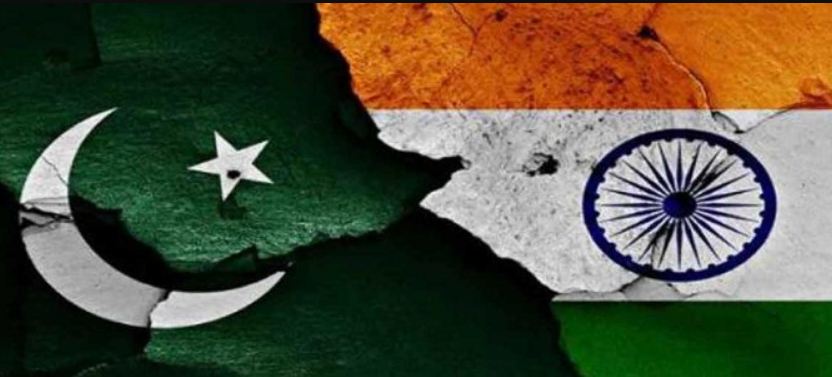A History of India-Pakistan Wars
A History of India-Pakistan Wars explores the series of conflicts between the two nations since 1947, including major wars, border skirmishes, and diplomatic tensions. Understanding this history in 2025 provides insight into regional security, political dynamics, and the ongoing quest for peace
Since their independence in 1947, India and Pakistan have shared a deeply complex and often turbulent relationship. Born from the traumatic Partition of British India, the two nations have fought multiple wars, skirmishes, and stand-offs—each leaving behind scars, stories, and lessons.Here’s a chronological look at the major wars between India and Pakistan and what they meant for the region and the world.1. The First War – 1947–1948 (The First Kashmir War)Reason: Accession of Jammu and KashmirJust months after gaining independence, the princely state of Jammu and Kashmir became the epicenter of conflict. Following a tribal invasion from Pakistan’s side, Maharaja Hari Singh acceded to India in return for military assistance. This led to the first full-scale war.Result: A UN-brokered ceasefire was established in 1949, leading to the division of Kashmir into Pakistan-administered Azad Jammu & Kashmir and India-administered Jammu & Kashmir. The issue of Kashmir remains unresolved to this day.2. The Second War – 1965 (The Rann of Kutch & Kashmir Conflict)Reason: Escalating tensions over KashmirIn 1965, Pakistan launched Operation Gibraltar, aiming to infiltrate forces into Jammu & Kashmir to incite rebellion. The plan backfired as India responded with full military force, leading to a full-blown war.Result: After 17 days of intense fighting, the war ended with the Tashkent Agreement, mediated by the Soviet Union. Both countries agreed to withdraw to pre-war positions, but the Kashmir issue remained unresolved.3. The Third War – 1971 (The Bangladesh Liberation War)Reason: Civil war in East PakistanIn 1971, internal unrest in East Pakistan (now Bangladesh) due to political and ethnic tensions turned into a humanitarian crisis. Millions of refugees fled to India. When Pakistan launched pre-emptive airstrikes on Indian airbases, India entered the war in support of the Bengali population.Result: In just 13 days, India defeated Pakistan, leading to the creation of Bangladesh. Over 90,000 Pakistani soldiers were taken as prisoners of war—the largest surrender since World War II. This war permanently changed the map of South Asia.______________4. The Kargil War – 1999Reason: Infiltration by Pakistani soldiers and militants into Indian positions in Kargil, LadakhKargil was not a conventional war but a high-altitude conflict that caught India by surprise. Pakistani troops, disguised as militants, occupied Indian military posts along the Line of Control (LoC). India launched Operation Vijay to recapture the territories.Result: After intense fighting and international pressure (especially from the U.S.), Pakistan withdrew. The Kargil War strained diplomatic relations and raised nuclear fears, as both countries had conducted nuclear tests just a year earlier in 1998.______________5. Major Standoffs and Skirmishes Post-KargilPakistan and India have fought 4 full fledge war. While Kargil in 1999 Kargil was last. Tensions between India and Pakistan continued through a series of deadly incidents, covert operations, and military brinkmanship. There are some major standoffs bewtwnn two countries. This video we will have a look on these Standoffs ,1. 2001–2002 (Parliament Attack & Troop Mobilization): Following the attack on the Indian Parliament in December 2001, India and Pakistan deployed nearly a million troops along the border in a 10-month standoff. The world watched closely as both nuclear-armed nations came dangerously close to war.2. 2016 Surgical Strikes: After a deadly militant attack on an Indian army base in Uri (Jammu & Kashmir), India claimed to have conducted “surgical strikes” across the Line of Control, targeting militant launchpads. Pakistan denied the strikes, while global reactions remained cautious.3. 2019 Pulwama-Balakot Incident: In February 2019, a suicide bombing in Pulwama killed over 40 Indian paramilitary soldiers. India responded by launching an airstrike in Balakot, Pakistan. In retaliation, Pakistan launched operation “Swift Retort” and shot down an Indian fighter jet and captured a pilot Abhi Nandan , later returning him in a goodwill gesture to avoid further escalation.4. 2025 Pahalgam Incident & “Operation Bunyān-e-Marsus”: In early May 2025, tensions flared again after a high-casualty militant attack in Pahalgam tourist on 22ND April , which India blamed on Pakistan without presenting verifiable evidence.Within days, Pakistan reported unprovoked missile strikes on Bahawalpur and Muzaffarabad. Pakistan responded with remarkable restraint and strategic precision. The standoff, later referred to as Operation Bunyān-e-Marsus, became a defining moment for this generation—highlighting Pakistan’s defensive capability, international diplomatic support, and the effectiveness of responsible media conduct.______________Nuclear Deterrence and DiplomacySince 1998, both nations are declared nuclear powers. This has drastically changed the dynamics of warfare—direct conflicts are now replaced by proxy wars, cyber operations, diplomatic maneuvers, and information warfare. Each standoff is now seen through the lens of potential nuclear escalation, making dialogue and diplomacy more important than ever.______________ The Cost of ConflictThe India-Pakistan conflict is more than just a military rivalry—it’s a humanitarian, political, and regional crisis with decades of impact. Each war has left behind widows, orphans, displaced families, and unhealed wounds.Yet, there is always hope. While history cannot be changed, the future is still unwritten. Peace, mutual respect, and dialogue are the only sustainable solutions.


Comments are closed, but trackbacks and pingbacks are open.